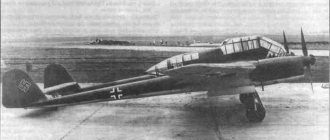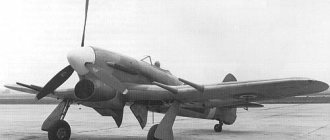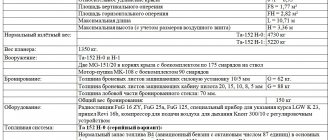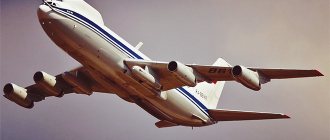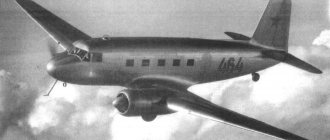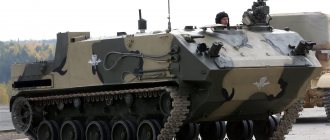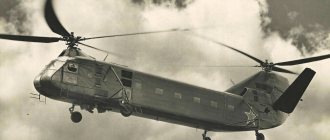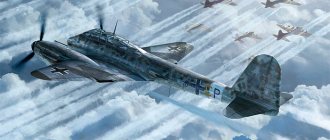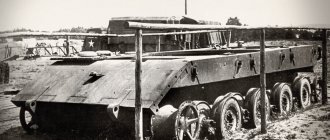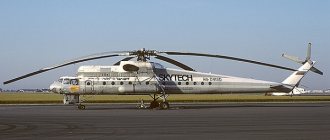Focke-Wulf Flygzeugbau
| Earlier | Bremer Flugzeugbau |
| Type | first AG, then GmbH |
| Industry | Aerospace industry |
| Successor | Vereinigte Flugtechnische Werke |
| Based | October 24, 1923 ; 97 years ago (1923-10-24) |
| Founders |
|
| Non-existent | 1964 |
| Fate | Merged |
| Headquarters | Bremen , Germany |
| Key people | Kurt Tank |
| Goods | Commercial airliners, Military aircraft, helicopters |
Focke-Wulf Flugzeugbau
(German pronunciation: [ˌfɔkəˈvʊlf]) was a German manufacturer of civil and military aircraft before and during World War II. [1] Many of the company's successful fighter designs were minor modifications of the Focke-Wulf Fw 190. It is one of the predecessor companies of today's Airbus.
History[edit]
The company was founded in Bremen on October 24, 1923 as Bremer Flugzeugbau AG
Prof. Focke, [a] Georg Wulf [b] and d - r RER.
pol. Werner Naumann. [c] Almost immediately they renamed the company Focke-Wulf Flugzeugbau AG
(later Focke-Wulf Flugzeugbau GmbH). [2]
Under government pressure, Focke-Wulf merged with Albatros-Flugzeugwerke in Berlin in 1931. Albatros-Flugzeugwerke engineer and test pilot Kurt Tank became head of the technical department and began work on the Fw 44 Stieglitz
(Goldfinch).
Dr. Ludwig Roselius became chairman of the board of directors in 1925 and handed it over to his brother Friedrich at the beginning of 1933. In 1938, the HAG Roselius plant increased its share to 46%, and C. Lorenz AG received 28%. The company was transformed into Focke-Wulf Flugzeugbau GmbH and no longer had to publish its reports. At this time there was a significant injection of capital. [3]
In August 1933, Hans Holle and Rudolf Schubert received power of attorney for the Berlin branch of Focke-Wulf. Then, in October 1933, Focke-Wulf Flugzeugbau AG Albatros Berlin was officially registered with the Ministry of Trade. [4]
Dr. Roselius always remained the driving force behind Focke-Wulf. He and his close associate Barbara Goett often met with the technical director, Professor Kurt Tank. When Roselius died in May 1943, Heinrich Puvogel continued to handle the financial affairs of Focke-Wulf as head of Seehandel AG [5].
Hanna Reitsch demonstrated the Focke-Wulf Fw 61, the first fully controllable helicopter (as opposed to a gyroplane), in Berlin in 1938. [6] The four-engine Fw 200 airliner flew non-stop between Berlin and New York on 10 August 1938. , completing the trip in 24 hours and 56 minutes. It was the first aircraft to fly this route non-stop. The return journey on August 13, 1938 took 19 hours and 47 minutes. These flights are commemorated by a plaque on Böttcherstrasse in Bremen.
Fw 190 Würger
(shrike/butcher-bird), designed from 1938 to, and produced in quantity from early 1941–1945, was a mainstay single-seat fighter for
the Luftwaffe
during World War II.
Destroyed Focke-Wulf factory in Bremen (1945)
The repeated bombing of Bremen during World War II led to mass production factories being moved to eastern Germany and the General Government, with AGO Flugzeugwerke of Oschersleben as the main subcontractor for the Fw 190. These factories employed many foreign and forced laborers, and since 1944 also prisoners of war. The 100-acre (0.40 km 2 ) Focke-Wulf plant at Marienburg produced approximately half of all Fw 190s and was bombed by the Eighth Air Force on 9 October 1943. [7]
Many Focke-Wulf employees, including Kurt Tank, worked at the Instituto Aerotécnico in Cordoba, Argentina from 1947 to 1955. Others, like Heinrich Focke, went to the Brazilian Department of Aerospace Science and Technology, helping Brazil create Embraer. [8] Focke-Wulf began producing gliders in 1951, followed by motorized aircraft in 1955. Focke-Wulf, Weserflug and Hamburger Flugzeugbau joined forces in 1961 to form the Entwicklungsring Nord (ERNO) to develop rockets.
The ITT Corporation, which had acquired a 25% stake in the company before the war, won $27 million in compensation in the 1960s for damage to its stake caused by Allied bombing during World War II. [9] Colonel Sosthenes Behn, Ludwig Roselius and Barbara Goette outwitted Hitler in 1936 when he attempted to remove Roselius as major shareholder from Focke-Wulf AG, followed by a reconstruction that resulted in the privatization of Focke-Wulf Flugzeugbau GmbH. [10] Focke-Wulf officially merged with Weserflug in 1964, becoming Vereinigte Flugtechnische Werke. (VFW), which after several additional mergers became European Aeronautic Defense and Space Company NV (EADS). EADS was later reorganized into Airbus.
Information sources
#i Manual 1943 edition. #i
The German reconnaissance aircraft Focke-Wulf.189 (FW.189), which, it should be noted, did not join the Luftwaffe from the very beginning of World War II, turned out to be one of the most successful aircraft of Nazi Germany. Its extraordinary survivability and unique design solutions made it possible to very effectively carry out assigned tasks on all fronts where it was deployed. They were afraid of him, since the flight of a reconnaissance spotter over positions often foreshadowed an imminent air or artillery strike.
The Red Army soldiers nicknamed the plane “the frame” for its distinctive appearance, and Soviet fighter pilots disliked the FW.189 because it was incredibly difficult to shoot down. It is known that there were cases when the Focke-Wulf was successfully grounded even after an air ram was used against it.
Airplane[edit]
1932 - Focke-Wulf Fw 44
1939 - Focke-Wulf Fw 190
1943 - Focke-Achgelis Fa 330
Focke-Wulf Fw 30
Focke-Wulf Fw 61
Borgward Hummingbird
Company designations[edit]
In alphabet order:
- Focke-Wulf A 3
- Focke-Wulf A 4
- Focke-Wulf A 5
- Focke-Wulf A 6
- Focke-Wulf A 7
- Focke-Wulf A 16 - light transport aircraft, 1924. The first project built by Focke-Wulf.
- Focke-Wulf A 17 Möwe
(Gull) - 8-seater airliner, 1927 - Focke-Wulf A 20 Habicht
(Hawk) - 4-seat airliner, 1927 - Focke-Wulf A 21 Photomöwe
- aerial photograph of A 17, 1929. - Fockw-Wulf A 26 - engine test bench
- Focke-Wulf A 28 - A 20 with updated engine
- Focke-Wulf A 29 - production version of the A 17, 1929.
- Focke-Wulf A 32 Bussard
(Buzzard) - airliner, 1930. - Focke-Wulf A 33 Sperber
(Sparrowhawk) - 3-seat airliner, 1930. - Focke-Wulf A 36 - mail plane, 1931
- Focke-Wulf A 38 Möwe
(Gull) - 10-seat airliner, 1931 - Focke-Wulf F 19 Ente
(Dak) - experimental civil multi-purpose aircraft, 1927. - The Focke-Wulf GL 18 is a light transport aircraft developed from the A 16 of 1926.
- Focke-Wulf GL 22 - modified GL 18, 1927
- Focke-Wulf K 23 - two-seat reconnaissance aircraft, 1928.
- Focke-Wulf L 101 D Albatross
- Focke-Wulf S 1 - trainer, 1925
- Focke-Wulf S 2 - two-seater trainer, 1928.
- Focke-Wulf S 24 Kiebitz
(
Lapwing
) - sports aircraft, 1928. - Focke-Wulf S 39
- Focke-Wulf S 48
- Focke-Wulf W 4 - reconnaissance seaplane, 1927
- Focke-Wulf W 7 - maritime patrol biplane, 1932.
RLM designations [edit]
- Focke-Wulf Fw 40
- Focke-Wulf Fw 43 Falke
(Falcon) - utility aircraft - Focke-Wulf Fw 44 Stieglitz
(Goldfinch) - trainer (biplane), 1932. - Focke-Wulf Fw 47 Höhengeier
(Vulture) - weather aircraft - Focke-Wulf Fw 55 - seaplane biplane
- Focke-Wulf Fw 56 Stösser
(Goshawk) - trainer (umbrella monoplane), 1933. - Focke-Wulf Fw 57 - heavy twin-engine fighter-bomber (prototype), 1935.
- Focke-Wulf Fw 58 Weihe
(Kite) - transport/photo-reconnaissance/meteorological aircraft, 1937. - Focke-Wulf Fw 61 - helicopter (prototype), 1936
- Focke-Wulf Fw 62 - naval reconnaissance aircraft (biplane seaplane), 1937.
- Focke-Wulf Ta 152 - fighter-interceptor (derived from Fw 190), 1944.
- Focke-Wulf Ta 154 Moskito
(Mosquito) - night fighter with a wooden structure, like its British namesake, 1943. - Focke-Wulf Fw 159 - fighter (prototype only), 1935
- Focke-Wulf Fw 186 - gyroplane reconnaissance aircraft (prototype), 1937
- Focke-Wulf Fw 187 Falke
(Falcon) - twin-engine, two-seat heavy day fighter ("Zerstörer"), 1936. - Focke-Wulf Fw 188 - reconnaissance aircraft (prototype), 1939
- Focke-Wulf Fw 189 Uhu
(Eagle Owl) - twin-engine, three-seat army cooperative/tactical reconnaissance, 1938. - Focke-Wulf Fw 190 Würger
(Shrike / butcher-bird) - single-seat fighter / interceptor, 1939. - Focke-Wulf Fw 191 - twin-engine Bomber Bomber B (prototype), 1942.
- Focke-Wulf Fw 200 Condor - multi-engine airliner and maritime patrol bomber, 1937.
Created under license[edit]
- Focke-Wulf C.20 - built under license (gyroplane)
- Focke-Wulf C.30 Heuschrecke
(Grasshopper) - built under license (gyroplane) - Focke-Wulf FWP.149D - built under license from the Piaggio P.149
Planned/unfinished projects[edit]
- The Focke-Wulf Fw 42 was a twin-engine medium bomber project developed from the 1929 F 19.
- The Focke-Wulf Fw 160 is a design for a four-engined bomber with a twin-wing unconnected tail.
- Focke-Wulf Ta 183 Huckebein
- jet-powered fighter project - Focke-Wulf Fw 206 - planned commercial aircraft
- Focke-Wulf Fw 238 - long-range bomber project (RLM airframe number 8-238
is already used by Blohm und Voss) - Focke-Wulf Fw 249 - project of a large transport aircraft; officially designated Project 195.
- Focke-Wulf Fw 250 - twin-engine jet fighter project
- Focke-Wulf Fw 252 - single-engine jet fighter
- The Focke-Wulf Ta 254 is a proposed variant of the Ta 154 fighter.
- Focke-Wulf Fw 259 Frontjäger
(concept) - Focke-Wulf Fw 260 – VTOL airliner proposal from the 1960s
- Focke-Wulf Fw 261 - four-engine bomber/reconnaissance/submarine support aircraft project
- Focke-Wulf Ta 283 - fighter-interceptor project
- Focke-Wulf Fw 300 - proposed long-range version of the Fw 200, 1942.
- Focke-Wulf Ta 400 - American
bomber
designer , never built, 1943. - Focke-Wulf Fw P.03.10206 - a series of long-range strategic bombers of the 1944 project.
- Focke-Wulf Fw P.03.10221-15 - large-capacity strategic transport, 1941.
- Focke-Wulf Fw P.03.10025 - 1944 design with swept wings, V-shaped tail and two pusher propellers at the rear.
- Focke-Wulf Fw 03.10251 - a series of night and bad weather jet fighters
- Focke-Wulf Fighter Project w/BMW803 - 1941 design with a linked twin-boom tail, slightly swept rear wings and two pusher propellers at the rear.
Projects [edit]
- Focke-Wulf 1000x1000x1000 - series of bomber projects, 1944.
- Focke-Wulf Project I - single-seat jet fighter, 1943.
- Project Focke-Wulf II
- Project Focke-Wulf III
- Focke-Wulf Project VII "Flitzer" - fighter aircraft of the 1944 project.
- Focke-Wulf Project VIII was a turboprop-powered fighter-bomber project, also designated Fw 281.
- Focke Rochen - VTOL fighter project from the 1950s
- The Focke-Wulf Super Lorin is a jet fighter with a combined engine.
- Focke-Wulf Fw 354 Triebflügel - tail-descent VTOL interceptor design
- Focke-Wulf TO Project
- Focke-Wulf Volksjäger - rocket-powered interceptor fighter project
- Focke-Wulf vertical take-off and landing project
Combat use
In the German Air Force (Wehrmacht), the Fw 189 aircraft was called the “Flying Eye” (“Flugauge”). The Soviet troops nicknamed him “Rama” for his characteristic appearance. The aircraft was intensively used in the Eastern European theater of operations, where it excelled significantly as a tactical reconnaissance aircraft and gunner. The FW-189 was also used against Soviet partisans in Belarus and Ukraine. This type of aircraft was practically not used on the Western Front.
Soviet soldiers had a sign: a “frame” has arrived - wait for the bombers. As a rule, immediately after the reconnaissance aircraft flew over the detected targets, an artillery or bomb strike was carried out.
Despite its fragile appearance and frankly low speed, the Fw 189 had good maneuverability at high altitudes and was a very difficult target for fighters there. The aircraft pilot could easily evade fighter attacks by performing horizontal maneuvers that could not be followed by ascending fighters. Thanks to excellent visibility and large sectors of fire, the reconnaissance air gunners had every opportunity to shoot down the attacking fighter. Soviet aviation instructions recommended not to fight with the “frame” on turns, but to carry out separate attacks, preferably from the clouds or from the direction of the sun.
The aircraft's survivability was also excellent. For example, on May 19, 1942, over Taman at an altitude of about 4 thousand meters, a pair of MiG-3s attacked a single Fw 189A. Soviet fighters hit the left engine of the unusual enemy, watching with satisfaction as, after several bursts, it fell off the plane. Confident of the victory, the MiGs retired, but the heavily damaged aircraft still “limped” to its forward airfield. It happened that a plane returned from a mission having been hit by a ram and having lost part of its vertical tail.
At the end of March 1945, a small number of Fw 189A were still retained in the night reconnaissance formations 1.(N)/31, 1.(N)/12, 1.(N)/13 and some others. They continued to fly combat missions almost until the last day of the war in Europe, although on a very limited basis. So, on the night of April 17, 21 aircraft from air groups NAGr.2 and 15 took part in the raid on the positions of Soviet troops, sixteen of which were “frames”. The raid on April 19 involved two Fw 189As along with several Bf 109s and Bf 110s from NAGr. 15. On the southern sector of the Eastern Front, until the very end of the war, “frames” from formation 1.(N)/41 operated. The last loss of the "frame" in a combat mission was recorded on May 8, 1945 - it was an aircraft that belonged to the headquarters of the NAGr.5 air group.
Links[edit]
- Yenn, William (2003). From the Focke-Wulf to the Avrocar: The Secret Weapon of World War II: The Military-Technical Breakthroughs That Changed History
. New York: Berkeley Books. pp. 281–283.. - Initially, few commercial aircraft were produced, typically with thick wings mounted high above bulky fuselages. "Focke-Wulf". Retrieved July 1, 2006.
- Dieter Pfligensdörfer; Volker Bergmann; Willie Elmers; Manfred Fittkau; Michael Jung; Michael Wolf; Wolfgang Gunther. Wellblech & Windkanal. Arbeit und Geschäfte im Bremer Flugzeugbau von den Anfängen 1909 bis heute. Steintor, 1989, ISBN 3926028513.
- Thiel, Reinhold. Focke-Wulf Flugzeugbau. Bremen, Verlag HM Hauschild GmbH, 2011. ISBN 9783897574892
- Leydig, Ludwig. Exploded bomb. sbpra 2013. ISBN 978-1-62516-346-2
- Reitsch "Fliegen, mein Leben" on pp. 180–198. Deutsche Verlags-Anstalt Stuttgart 1952
- Jump up
↑ Gurney, Gene (Major, USAF) (1962). "War in the Air: A Visual History of Air Force Combat in World War II." New York: Bonanza Books: 219. Cite journal requires |journal=(help) - Forjaz, Maria Cecilia Spina (2005). "As origins da Embraer". Tempo Social
(in Portuguese).
17
(1):281–298. DOI: 10.1590/S0103-20702005000100012. ISSN 0103-2070. - Sampson, Anthony: The Sovereign State
, Hodder and Stoughton, 1973, ISBN 0-340-17195-2 - ↑
US Military Government Office in the Post-War Germany Zone 1946-1949, Declassified pursuant to Executive Order 12958, Section 3.5 NND Project Number: NND 775057: NND Date: 1977
Bombers
In the West, Fw-190s were used over the beaches of Dieppe in August 1942 and in hit-and-run raids over southern England. In these operations, Fw-190 fighter-bombers
JG 26 attacked railway depots, factories and gas substations, targeting six coastal reservoirs. The installation of outboard underwing tanks allowed the aircraft to fly far into southern England.
Fw-190A-4/"Trop"
– modification of the fighter for tropical conditions of use in the Mediterranean zone.
It was equipped with protective dust filters on the engine air intakes. The aircraft was equipped with bomb racks for hanging a 250 kg bomb under the fuselage. Fw-190A-5/U15
- experimental torpedo bomber with a suspension device to accommodate a 1000-kg LT 950 torpedo.
Fw-190A-4/U16 -
. Fw-190A-
was created for training. 8/U1 with two seats; the aircraft made its first flight on January 23, 1944.
DESIGN FEATURES of the Focke-Wulf FW-190
- The all-metal tail unit is cantilevered with an in-flight adjustable stabilizer;
- The sliding part of the cockpit canopy is made of a whole piece of plexiglass, the fixed visor of the canopy is equipped with 57 mm armored glass. The total weight of the armor installed on the aircraft is 110 kg;
- Two synchronized 13 mm MG-17 machine guns are installed under the engine hood;
- Air-cooled engine BMW-801D with a power of 1700 hp. With.;
- Metal three-blade adjustable pitch propeller VDM, the operation of the propeller group is automated thanks to the use of a central command device-regulator;
- Synchronized (at the wing root) and non-synchronized 20-mm MG 151/20 cannons. their rate of fire was up to 900 rounds per minute, the supply of shells was 170-200 per barrel;
- The all-metal wing consoles consisted of two halves - upper and lower, each assembled by high-performance riveting of skin panels to the frame;
- The semi-monocoque fuselage consisted of three pressurized compartments: the engine, tail and cockpit compartments;
- The engine compartments were supplied complete with the engine by the engine-building plant; the cockpit and tail sections were manufactured by the aircraft plant, where the final assembly of the aircraft was carried out;
